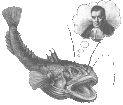UW Aquatic & Fishery Sciences Quantitative Seminar
Curry J. Cunningham
School of Aquatic and Fishery Sciences, University of Washington
A Management Strategy Evaluation Framework for Bristol Bay Sockeye Salmon
Abstract
Bristol Bay, Alaska is home to the largest wild sockeye salmon (Oncorhynchus nerka) fishery in the world, with a total harvest value of $165 million USD in 2010 and supporting an estimated equivalent to 10,000 year-around American jobs. Fishing effort in spatially explicit terminal fishing districts is intensively managed during the season to achieve seasonal escapement goals. However, there exists considerable uncertainty in defining these escapement goals. The traditional method for defining escapement goals has focused on fitting Ricker models to spawner-recruit data and estimating both Smsy and MSY, using maximum likelihood or Bayesian methods. However, these methods often ignore three fundamental sources of uncertainty and potential bias in estimates for management outcomes: 1) estimation error, 2) implementation uncertainty, and 3) stochastic recruitment dynamics. In order to better understand the potential outcome of four proposed escapement goal scenarios, we have constructed a management strategy evaluation framework that attempts to model both the biological processes underlying variation in recruitment over time, and the management process by emulating inseason decisions by Alaska Department of Fish and Game managers and difficulty in balancing objectives for mixed stock fisheries. I will also briefly discuss results from the ARDBEG (Analysis of Recruitment Dynamics for Biological Escapement Goals) model which explores how spawner-recruit relationships may be described by a mixture of production regime specific Ricker functions, with transition between regimes treated as a 1st order Markov process.

